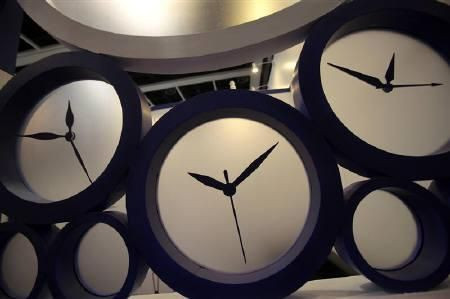Daylight Savings Time 2013: When To Set Your Clocks To 'Spring Forward'

It's almost time to set your clocks forward an hour in accordance with daylight saving time 2013 to better take advantage of sunny hours during the coming warm months.
It's about to be the most wonderful time of the year, namely, the date when we all "spring forward," setting our clocks ahead an hour so we can savor the sun during spring and summer, although we will all miss the hour of sleep that we give up to make the change.
Daylight saving time, or DST, demands that most Americans and Canadians set their clocks forward one hour on March 10, as noted by timeanddate.com. At 2 a.m. on that date, simply turn your clock's hour hand -- or adjust your digital display -- so that it instead reads 3 a.m.
Clocks on many personal computers, smartphones, tablets, and other electronic devices will automatically adjust to reflect the semiannual changes of DST, so make sure that this hasn't already taken place before you manually make the shift.
DST is also known by the name "Summer Time" in a number of European countries, but the two terms refer to the same phenomenon.
Daylight saving time was first proposed by George Vernon Hudson in 1895, and its employment in the U.S. was first mandated during World War I. It was subsequently used on and off for years by various countries and U.S. states. Since the 1970s, however, it has mostly remained in effect in much of the U.S. and Europe.
Some researchers dispute the benefits of daylight saving time (aka daylight savings time), saying it can disrupt sleep patterns, business operations, and various nighttime activities, but most people see it as a positive thing as it allows them to spend more time in the sun in the evenings.
Since the Energy Policy Act of 2005 was adopted, DST in the U.S. has lasted from the second Sunday in March to the first Sunday in November, when most Americans "fall back," setting their clocks back an hour to end the DST period.
The changes associated with DST have the odd side effect of making the March day when you "spring forward" have only 23 hours, while the November day when you "fall back" has 25 hours.
But, no matter what else you do, don't forget to "spring forward" on March 10.
© Copyright IBTimes 2024. All rights reserved.





















